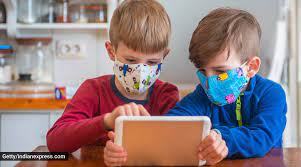The ongoing global health crisis has thrust face masks into the spotlight as a key preventative measure to mitigate the spread of viruses. However, as schools adapt to new safety protocols, an important question arises: Do masks affect children’s speech development and understanding? Educators are in a unique position to observe and address the potential implications of long-term mask-wearing on their students’ communication skills.
Impact on Speech Development
Face masks can potentially impact speech development, especially among younger children. These formative years are crucial for language acquisition, where children learn by observing facial expressions and lip movements—a process that is hindered by mask-wearing.
Understanding and Clarity
Masks have been shown to muffle sound, making it challenging for listeners to understand spoken words. This is particularly problematic in a classroom setting where auditory clarity is essential. Teachers may need to speak louder and enunciate more clearly to ensure understanding.
Social and Emotional Learning
Masks obscure most facial cues that are vital for emotional expression. Without these visual hints, students may find it harder to read emotional states or social cues from their peers and teachers. This could impact social interaction and emotional learning.
Strategies for Teachers
1.Enhanced Audio Technology: Using microphones or classroom audio systems could improve the sound quality of the teacher’s voice.
2.Clear Masks: When possible, using transparent masks might help students see their teachers’ mouths which could be beneficial for speech perception.
3.Visual Aids: Incorporating visual aids into teaching can provide alternative ways to convey information that might otherwise be lost due to masked communication.
4.Encouraging Clear Communication: Teachers should encourage students to speak clearly and use other forms of communication such as hand signals or body language.
5.Patience and Understanding: Recognizing that some children may struggle more than others with masked communication is important for fostering an inclusive learning environment.
Adaptation Over Time
It is important to note that both children and adults may adapt to these new challenges over time by developing heightened attentiveness to speech sounds and becoming more perceptive to non-facial visual cues.
While the necessity for masks continues, teachers play a critical role in mitigating their impact on communication. By adopting the right strategies, educators can help preserve speech clarity and understanding in the classroom, ensuring that learning outcomes are not compromised by the safety measures in place.





